We flew to Cusco early in the morning, a short one hour flight from Lima. Cusco was the center of the Inca Empire before the Spanish conquered the Inca, and this part of the visit would include multiple visits to Inca sites in different parts of the Sacred Valley (covered in the next section), but there were other things to see. Even the countryside was fascinating, with the Andes Mountains towering overhead and the villages with red clay tile roofs nestled on the valley floor. It was also a chance to acclimate to the altitude, as Cusco is 11,152 feet above sea level, leaving us quite literally gasping for breath with even minor exertion.

Our first stop was an Llama, Alpaca, and Vicuña farm, where we had a chance to feed some of the animals, watch traditional thread making and weaving, and see some Condors that were being rehabilitated. And pet dogs, obviously.
|
|
|
|
|
|
Next non-Inca stop was the market in Pisac, where we did some shopping and had a short lesson on how to spot real silver from cheap alloys (and where I ended up buying a hunk of pure silver as a memento, also learning for the first time that you can find silver in wire-like structures, nuggets, or in this case leafy or crystalline masses). Kind of funny; the place made all this hand made jewelry out of silver and semi precious stones, and they were trying to sell Alison different pieces, and I held up the blob of silver they had used to show us the natural luster of pure silver and asked if I could just buy that. And I could and I did. It's an awesome memento and the most expensive paperwieght EVER.
Along the way we passed a lot of Cuy restaurants with happy looking guinea pigs cheerfully waving at the passing cars. Cuy, by the way, is guinea pig. And there was this other place... well, I hope it's just selling ice cream. We did try cay at one point; it was reminiscent of duck, making it the only unusual meat in the world that doesn't taste like chicken.
The next day, we visited 4,000 year old salt mines (or flats, really) that are still in use today (which is why I'm lumping it into "Curso" instead of the Sacred Valley section). It produces what is considered some of the finest salt in the world, still done the same way it was 4,000 years ago; that is, through back-braking labor. Interestingly, the Maras Salt Mines are owned by local families from Maras and Pichingoto; the only way to own a piece of the pie (or salt, in this case) is to marry into one of the fams. The salt is actually from a spring that is naturally salty (for no obvious reason) that feeds into the flats via a series of ducts, where the water is allowed to evaporate, leaving the salt behind.
Just driving the length and breadth of the Urubamba Valley was fairly awe inspiring, and it's hard to image what it would be like to grow up with the majestic Andes mountains towering overhead. I also find it interesting to check out wildflowers, because when you get close, you realize you're not in Kansas anymore (or Massachusetts either). Which makes me wonder if South American visitors to New England take pictures of Dandelions...
The day we left for Machu Picchu, we stopped for lunch and drinks at an organic farm near the train station where they cooked our meal by burying the meat and vegetables in a pit of hot stones covered with broad leaves. The farm produces food, coffee, and alcohol in various varieties.
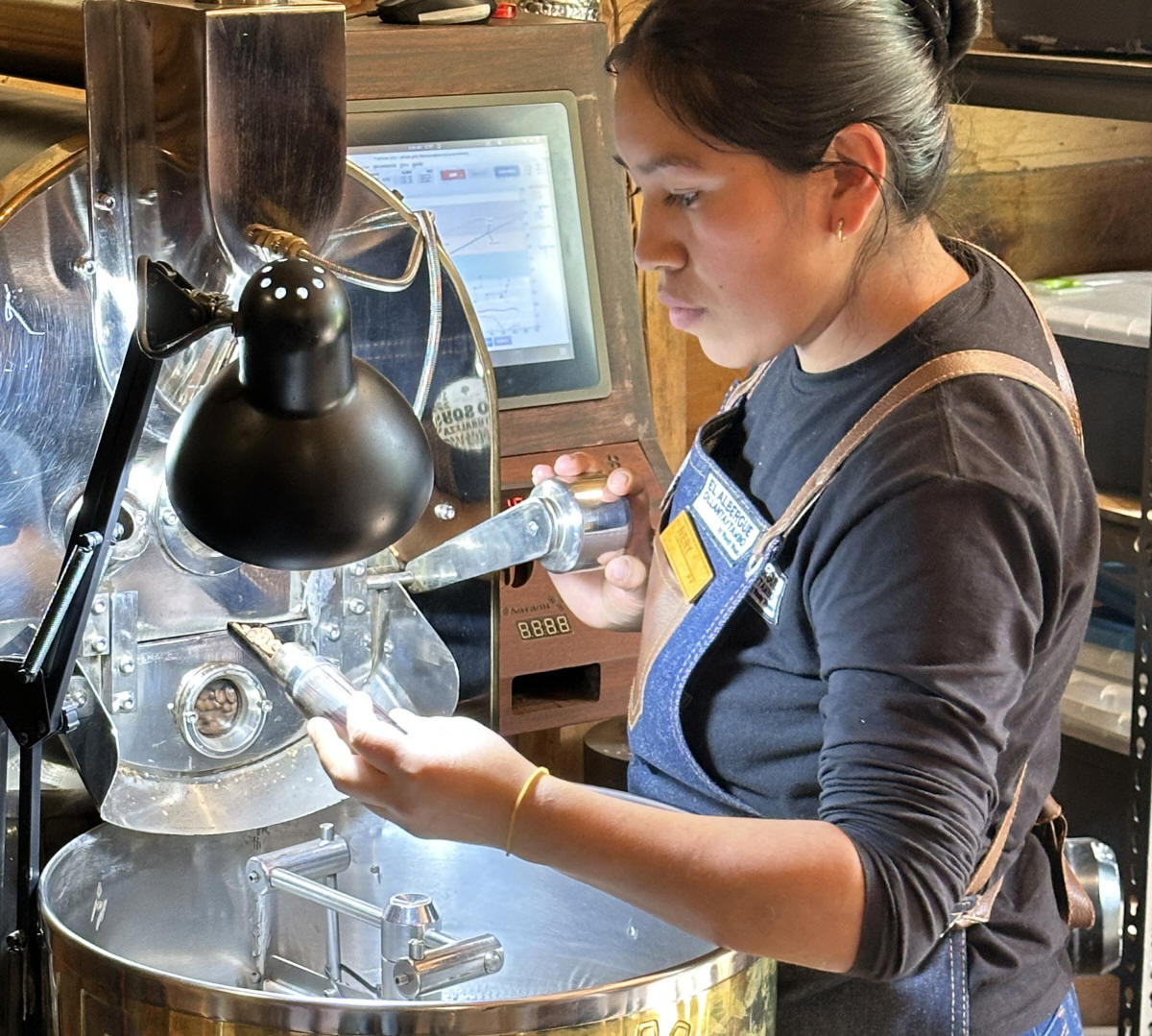
We returned to Cusco after Machu Picchu and had a tour that included some city sites and one Inca site (in the "Sacred Valley" section) and one combo site (here). And traffic jams:
We toured Qorikancha, the "Golden Temple," and it's Spanish addition, the Santo Domingo Convent, since most of Qorikancha was destroyed by the Spanish. The walls of Qorikancha were, according to Spanish observers, covered in sheets of gold, and numerous artifacts have been recovered by excavation. Some interior walls remained, and was the clearest example of how the Inca construction was vastly superior to the conquerors; in the pictures below, you can see how perfectly fitted the Inca sections where, verses the rough, mortared wall of the Church.
Unfortunately, the majority of the Inca sections where torn down and the place was dominated by the Convent. They are excavating sections outside the church, building dioramas of what they think the original temple looked like, and adding displayes of the remains of the Inca ruins inside. Again, unfortunately, many of them are interpreted by the writings of Felipe Guaman Poma de Ayala, an indigenous self-taught writer who tried to capture the history and lore of the Incas in 1600, well after the Spanish had obliterated the majority of the culture, so it's all a little suspect ... but still fascinating.
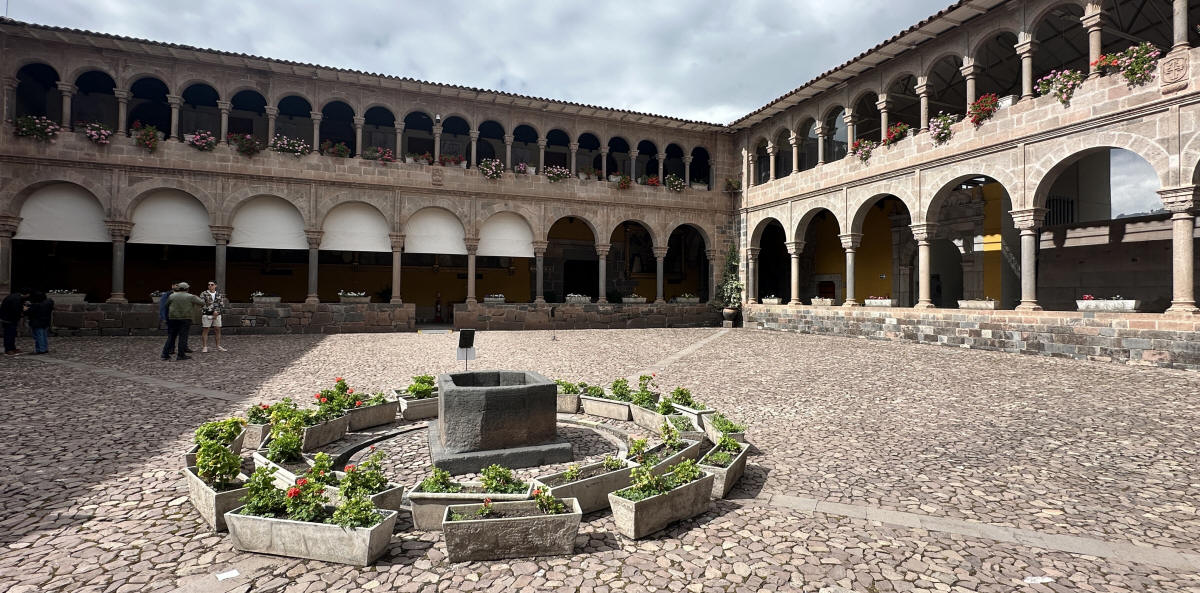
We also swung through the Basilica Catedral de Cuzco and Plaza Mayor de Cuzco across from it (note: I'm not sure why these are all "Cuzco" but the city is named "Cusco"). The plaza is considered the historical center of the city since it's foundation in 1534. No pictures allowed in the Basilica, but there were a number of exhibitions of local dancing outside.
Around the plaza was the Iglesia de la Compañía de Jesús (closed, for renovations I think), an Irish Pub (of course), and a golden statue of an Inca Emperor.
|
|
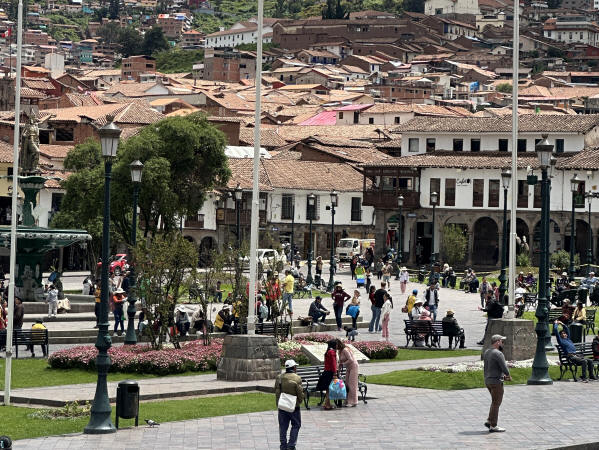 |
|
|
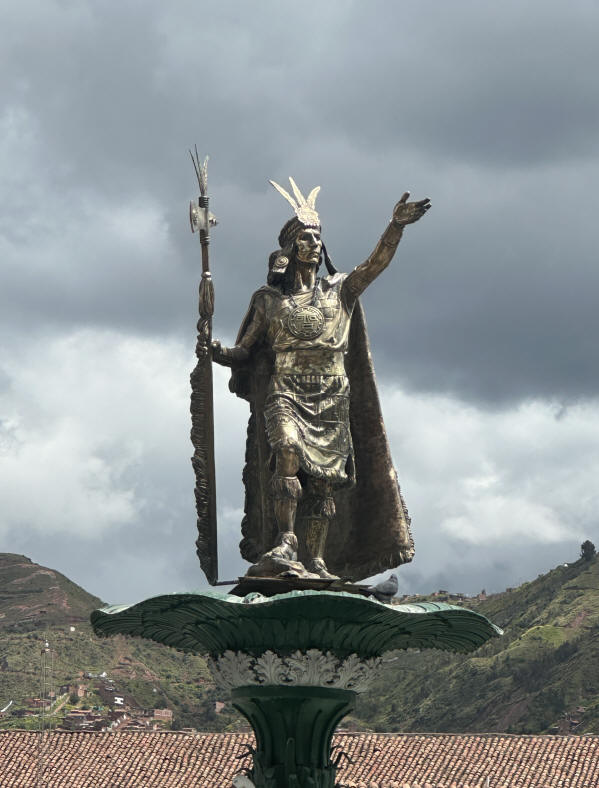 |
One other point of interest was our hotel, the Palacio del Inka, a 500 year old mansion with 195 pieces of artwork from the pre Inca, Inca, colonial and republican period on display, of which 60 are original paintings from Escuela Cusqueña.
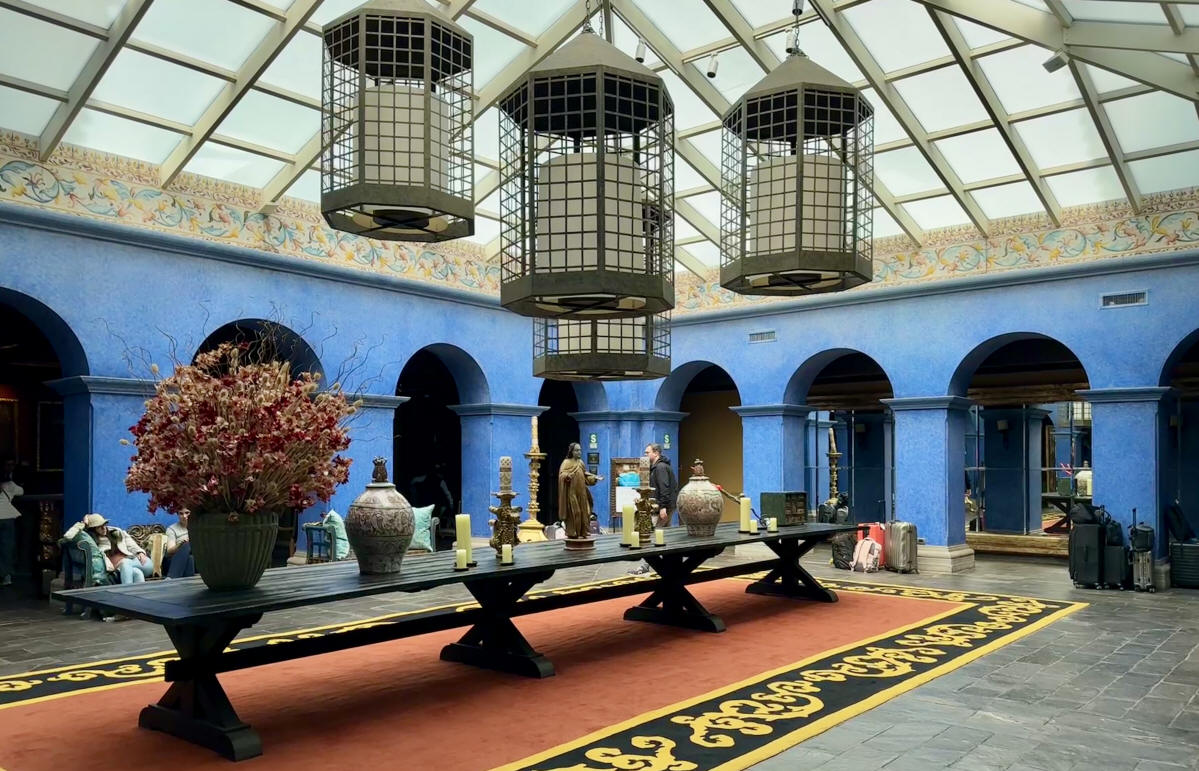
And, last shot, Alison in one of the Eyceliptis forests in the hills over Cusco... just because I like it.